685 Search Results for model
November 6, 2013
by Carole Zangari -
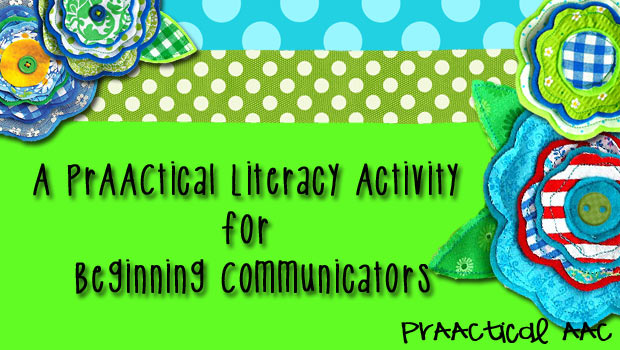
We’ve been having a great time supporting beginning communicators and gently modeling how they can be involved in literacy learning activities. In this post, we share a super simple activity to build alphabet knowledge and letter-sound correspondence. It has worked well (or fairly well) for beginning communicators who: Are just learning to establish cause-effect relationships Have little interest in existing classroom alphabet activities Are verbal, but reluctantly Are reluctant participants in group activities and seem to prefer being alone Have no formal AAC system, but would benefit from one Treat books and other printed materials as objects to spin, rip, or throw Have not been given the opportunity to participate in traditional literacy instruction. We love it because: It is is quick and easy. It requires almost no advance planning other than having a camera (or one on your phone/mobile device) Other people in the classroom notice us doing real... [Read More...]
November 5, 2013
by Carole Zangari -
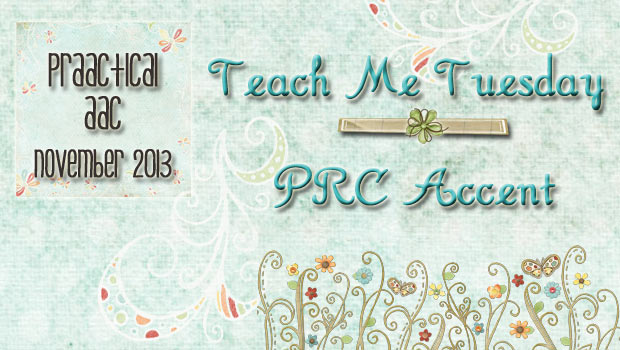
This week in Teach Me Tuesday we’re learning more about Accent from Prentke Romich Company (PRC). Here are the learning resources we’ll be using. Easy Start Manual NuVoice Software Manual Accent 700 Easy Start Manual Accent 700 Hardware Manual Accent 700-SB Quick Start Manual Accent 700-SB Hardware Manual Accent 1000 Hardware Manual Accent 1200 Hardware Manual Download Demo Software Where to Go for Help and Accent Knowledge Base for Various Models: 1200, 1000, & 700 Models If you know of other applicable resources, please add them in a comment below. See you next time!
November 2, 2013
by Carole Zangari -

Teaching new words is something SLPs plan for in almost every service delivery setting. This month, we’ll focus on vocabulary instruction for core and extended vocabulary. Thoughts on Teaching Core Vocabulary In Advance Plan ahead. Make a rough plan of the core words you will teach and when you will introduce them to the AAC learner. Make sure there is plenty of variety, especially pronouns, verbs, prepositions, conjunctions, and determiners. Words for talking about time (e.g., now, later), asking questions (e.g., what, where), and negation (e.g., not) are important, too. Here’s a link to our post on A Year of Core and A Year of Core, Unity Style. Ensure that the AAC learner has access to communication aids with an adequate base of core vocabulary. What if the learner doesn’t have an SGD or AAC app that is core language based? If you can update that to something with good core... [Read More...]
November 1, 2013
by Robin Parker -
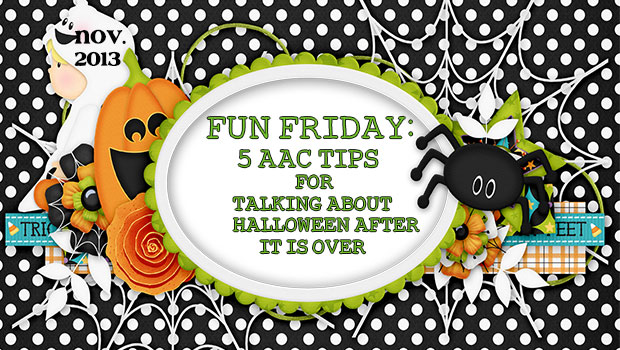
Language learning involves talking about events in the past, present, and future. Since Halloween is over, it is a perfect opportunity to help AAC users talk about past events. Here are 5 tips for getting started with ALL learners. Use a weekly or monthly (calendar) schedule to ‘remember’ Halloween or if you are sticking to core words to remember the “great day” or “bad day” depending upon the experience. Use photos of the Halloween festivities to discuss what happened, what everyone did, and you could even go for the best and/or worst part of the day. Use a Venn diagram to compare and contrast Halloween experiences. This can be done with comparing 2 people or 2 groups. For some learners, you can use images to put Halloween things that everyone saw or did while others you will need text only. Then, a discussion of what each student/group did that... [Read More...]
October 31, 2013
by Robin Parker -
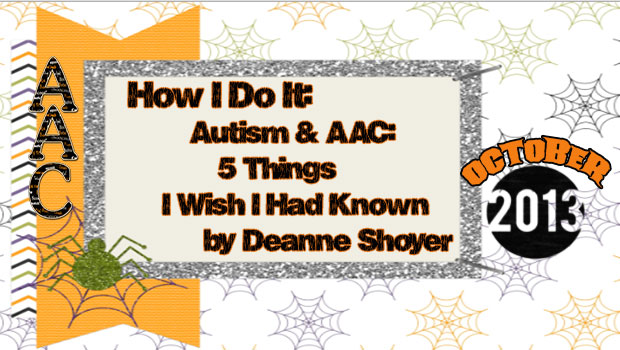
We are so pleased to have connected with Deanne Shoyer from Small But Kinda Mighty and even happier that she is our guest blogger today. Deanne is a mom of twin boys who both are on the autism spectrum. Deanne successfully fundraised to buy iPads for her boys and has been active for more than 3 years in social media and in the special needs app community. She has written about many things but often focuses on implementing AAC in a very PrAACtical way. Please feel free to share this very important post as she highlights AAC, what she has learned, and how it may help others. by Deanne Shoyer at Small But Kinda Mighty (original post at Small But Kinda Mighty) In the title of this post I’ve linked autism and AAC for a specific reason. A lot of the points here are equally applicable to people who have a... [Read More...]
October 29, 2013
by Carole Zangari -
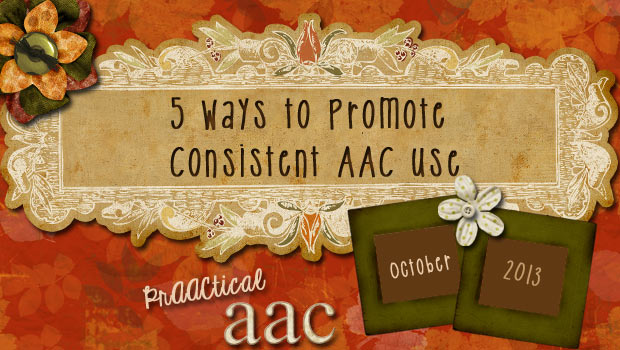
Work with someone who uses AAC but not as consistently as you would like? Here are some thoughts on how to make an impact in that area. 1. Write goals that help you fight this battle. E.g., Janie will use her AAC system to ask for help at least once per activity; Jimmy will use his AAC system to answer 2-3 curriculum-related questions in each class period; Given her AAC system, Jenny will use the correct morphological endings for plurals and past tense at the beginning or ending of each group activity. 2. Be an AAC cheerleader. In most settings, it is the adult who sets the tone for how communication will proceed. If it isn’t important to US, then it will never be important to the AAC learners. So, we try our best to use AAC every time we see the learner. It takes some work to build... [Read More...]
October 26, 2013
by Robin Parker -
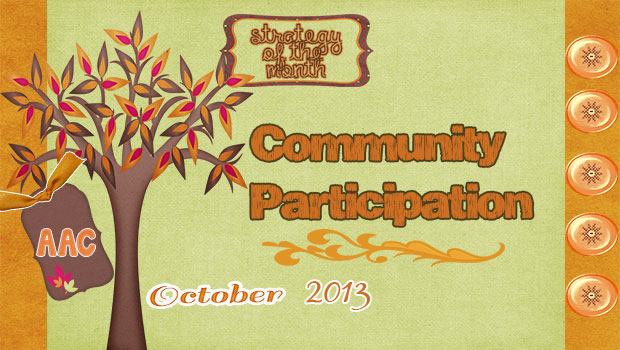
Community participation and communication for AAC users is an integral part of of developing, growing up, and having inclusive opportunities. We often relate community participation to quality of life indicators. Community participation for AAC users begins from the… beginning. Young children can order in restaurants, use picture menus, and have access to many inclusive events. As children grow into adolescents and adults, community participation involves post secondary options, employment, and community living. Perspectives from AAC Users Have communication displays and devices available at ALL times– You need access to a communication system(s) to participate in all situations. Remember to take AAC with you. The sooner the AAC user becomes responsible for taking or telling someone to take the device/displays with them the easier it becomes. For mobile technology systems, there are rugged cases that withstand wind, water, even medical waste (see Lauren Enders Pinterest boards for case and accessory options).... [Read More...]
October 12, 2013
by Robin Parker -
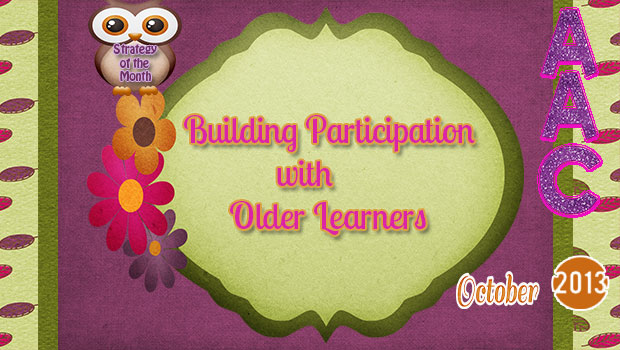
We love active participation for communication and language learning. Actually, we love active participation in all areas of life for us, for our students, for everyone. When Carole introduced the Building Participation Strategy of the Month, she discussed the role of the Participation Model (Beukelman & Mirenda, 1988; 2013). The Participation Model is a framework for understanding the barriers to participation and then from a prAACtical intervention standpoint developing strategies and activities to increase active participation in a variety of (ALL) aspects of life. For the 2012 AAC Awareness Month, we discussed barriers to participation. This year’s focus is on activities and strategies for getting past the barriers to building age appropriate authentic active participation for ALL learners. We have learned that when older learners with significant communication challenges are provided with age appropriate activities and supports, they can be engaged and motivated to participate and can often surprise us with... [Read More...]
October 5, 2013
by Carole Zangari -
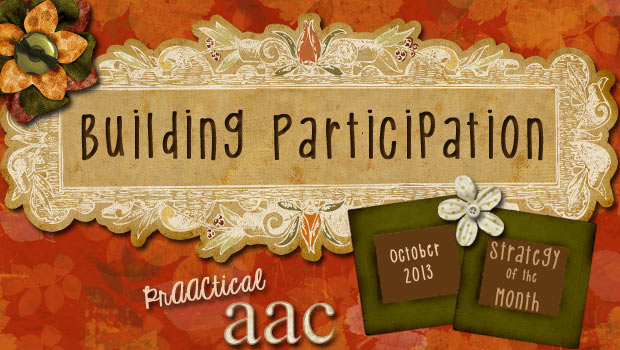
Do you know any of our friends? Jenna can use a talking switch with only a little bit of support. But at calendar time, no one thinks of asking her a question. Hao knows almost two dozen signs and can use a communication wallet with non-signers. But at social gatherings, he’s mostly off to the side playing a game on his iPhone. Isaac uses his SGD capably and can create grammatically correct sentences that include noun phrases and conjunctions. But in Chemistry, his lab group conducts their experiments and writes up the lab report without his contributions. Sienna is able to choose between preferred and non-preferred items in a field of three and is learning to do so in a field of four. But the only time she gets to make a choice is at mealtimes. Like many of you, we put in countless hours helping children and adults who... [Read More...]
October 3, 2013
by Carole Zangari -
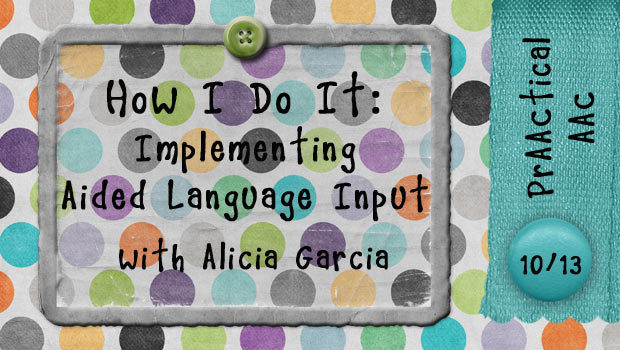
We are so pleased to have reconnected with SLP Alicia Garcia and are even more delighted that she agreed to do a guest post. Alicia is the clinical lead of the AAC Clinic at One Kids Place, a children’s treatment centre in northern Ontario. She has over 20 years of experience in pediatric rehabilitation practice in private and public settings, including clinical practice in AAC clinics and programs in Wisconsin, Florida, and now in Ontario. In this post, Alicia addresses one of our favorite clinical strategies in a very prAACtical way. Implementing Aided Language Stimulation: 8 Frequent Mistakes and How to Avoid Them Aided Language seems like a simple concept: Partners should model or demonstrate picture communication when talking to children who are learning to use picture communication, so that they would learn by example. Yet, when it comes to implementation we see frequent mistakes and misinterpretations. The most commons being:... [Read More...]









